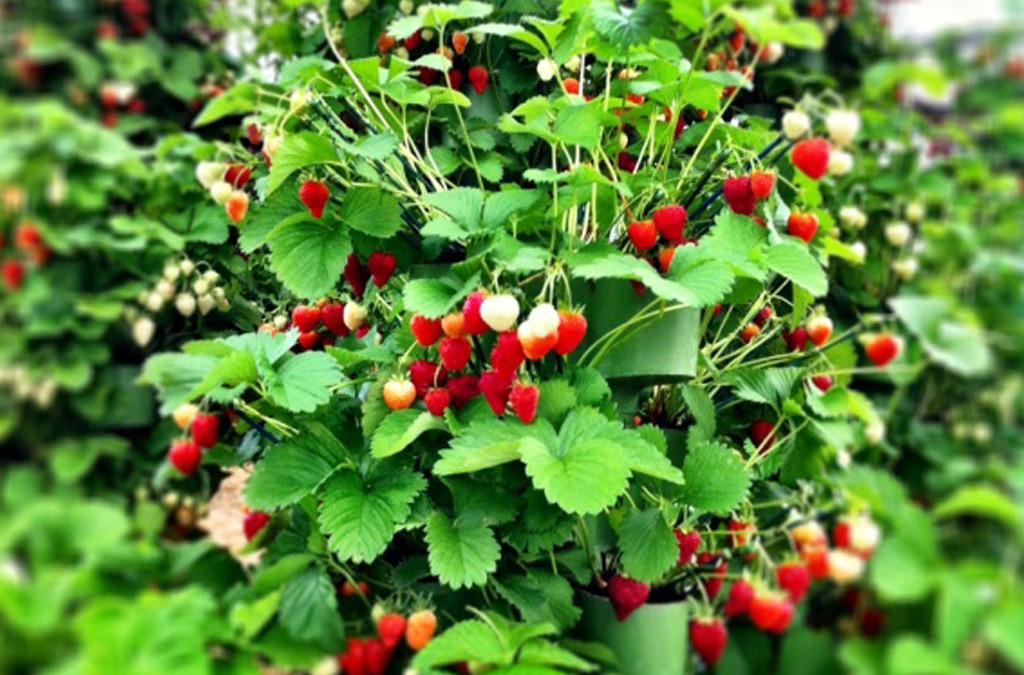Grow your own strawberries to avoid eating the pesticides farmers spray on them morning, day and night.
Earlier this month news reports indicated that strawberries were once more at the top of the Environmental Working Group’s (EWG) Dirty Dozen™ list of produce that tests positive for the most pesticides. To determine the results they randomly sampled over 36,000 fruits and vegetables.
For some reason farmers love to spray their strawberries with at least seven different types of fungicides, insecticides and weed killers. The EWG’s tests indicated that 99% of the samples had at least one type of pesticide on them, even the organic brands. What is more 29% had over ten types of poison sprayed on them, and the “dirtiest strawberry” tested positive for 21 kinds of pesticides.
Fortunately strawberries are one of the easiest plants to grow organically at home. This is the best way to make sure that one of your favorite berries is not smothered in invisible, tasteless poison.
How to Grow Organic Strawberries
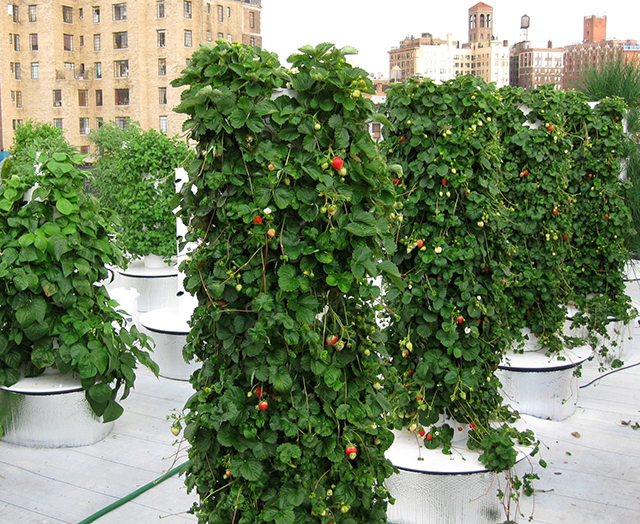
Strawberries are a hardy fruit bearing plant that are simple enough to grow with a little care and effort. They can be grown in the ground, in a container or in a raised planting bed. You can grow strawberries in a large pot, hanging container, in a window box or even hydroponically indoors.
Determine the method of strawberry production that works best for you. Ideally you have an rich, earthy field of well turned loam to build raised planting rows on. However if you live near a field or a wooded area, then wildlife may be an issue. Either you will have to resign yourself to sharing your strawberries, or plant them in a more protected setting such as a container or greenhouse. Growing them hydroponically on a wall inside keeps your crop protected from all but the most determined of all strawberry predators.
Strawberries are a full sun plant that require six to ten hours of light each day. They like fertile, well drained soil with a moderate pH balance.
There are three main types of strawberries with seemingly infinite varieties. The kind of strawberry determines the best time to plant and harvest.
- Day-Neutral – Indifferent to the time of day these strawberries produce fruit year round, as long as the climate is moderate. But they do not grow as many berries as the seasonal plants.
- Everbearer – Everbearing strawberries have two harvest periods, once in autumn and once in spring.
- Junebearer – The Junebearing strawberry fruits prolifically in the spring and grows runners in the summer, because it is sensitive to the length of daylight it receives.
Avoiding Strawberry Pest Problems
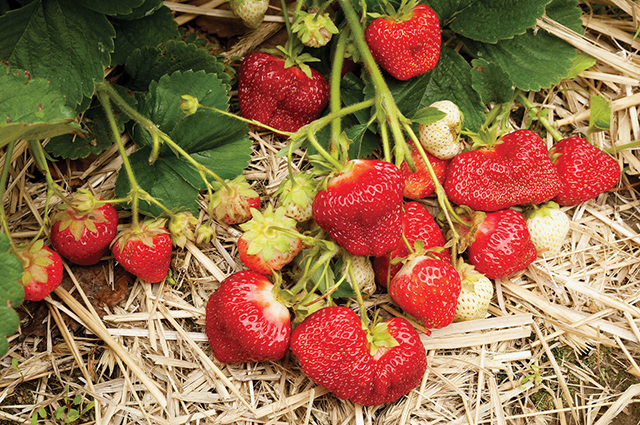
The first thing to remember is when growing organic strawberries you should never spray them with pesticides. This can be a problem since a lot of insects and animals find strawberry plants to be as delicious as people do. Additionally they are prone to catching a variety of infections.
The nemesis of the strawberry plant is the Tarnished Plant Bug, but they are also vulnerable to beetle larvae, nematodes and white grubs. They are frequently subject to diseases and fungi such as anthracnose or grey mold. That is why large scale farmers have to spray them with pesticides.
Avoid the pest problem before it starts with good site selection. If they are planted in an area without good drainage the excess water makes them more likely to rot. Plant strawberries in a raised bed to encourage good airflow, which helps keeps the leave dry and free of parasites.
To discourage grey mold, cover the planting area with a bed of mulch such as straw or pine needles. (Leave a little patch of earth around each plant so it can breathe.) Keep a close eye on newly forming buds for signs of weevil or Tarnished Plant Bug activity. You can set out bait or traps for fruit flies and slugs, and the strawberries will still be considered organic. Remember that the longer you leave ripe fruit on the plant the more likely it is to be eaten by someone else.
Making the Most of Strawberry Crops
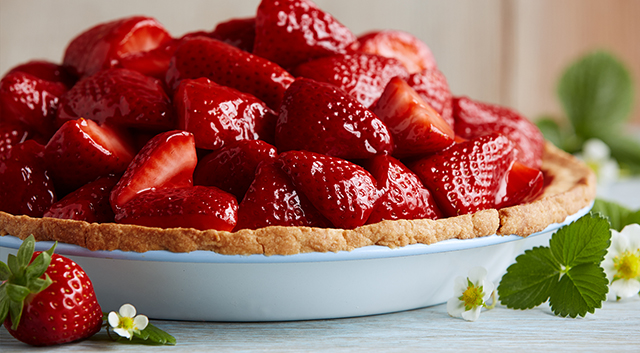
Once the fruit ripens harvest fresh strawberries as soon as possible, or at least every two to three days. You will have a lot of strawberries, and you didn’t protect them from all of those birds and bud weevils just to let them mold now. That means you need strawberry recipes.
Strawberries make a wonderful dessert fresh with whipped cream or sugar. They can also be chopped up and added to a variety of salads and salsas. Mix them into some plain yogurt, or as add them to a smoothie. Or make a batch of homemade strawberry ice cream. You can preserve strawberries in jams and jellies. Use them as toppings on an assortment of cakes, pastries, pies and breakfast foods. Since strawberries are fruit that means they must be good for you.
When the police burst into your hydroponic strawberry farm thinking that it must be an illegal marijuana growing operation they will be surprised at first. Once you explain that you are simply cultivating organic, pesticide-free strawberries you will all laugh about the misunderstanding. They might even ask to purchase some of your produce, because everyone likes strawberries.
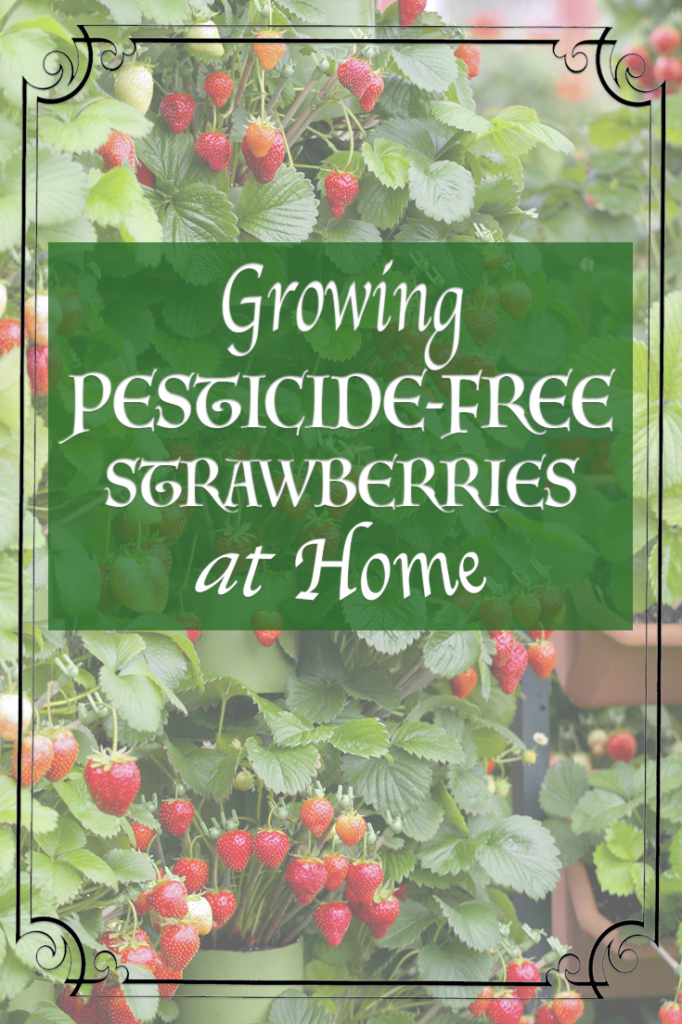
Elizabeth de Moya lives near San Diego, CA. She volunteers for the birds, and she works at the zoo. She is going back to school to study pre veterinary medicine. She has a BA in Linguistics from UC Berkeley.
